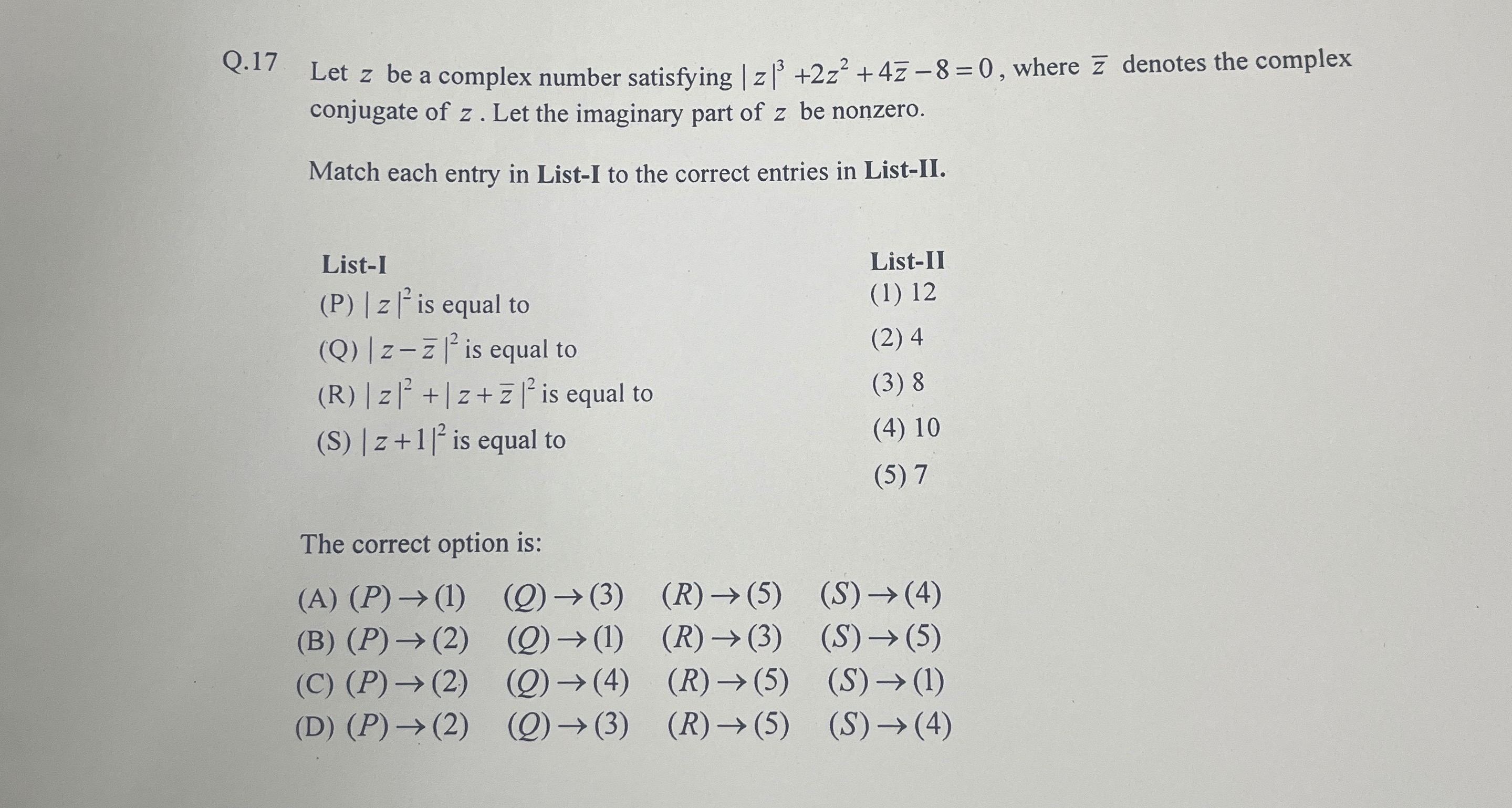Question
Question: Let $z$ be a complex number satisfying $|z|^3 + 2z^2 + 4\overline{z} - 8 = 0$, where $\overline{z}$ ...
Let z be a complex number satisfying ∣z∣3+2z2+4z−8=0, where z denotes the complex conjugate of z. Let the imaginary part of z be nonzero.
Match each entry in List-I to the correct entries in List-II.
| List-I | List-II |
|---|---|
| (P) $ | z |
| (Q) $ | z-\overline{z} |
| (R) $ | z |
| (S) $ | z+1 |
| (5) 7 |
The correct option is:

A
(P)→(1) (Q)→(3) (R)→(5) (S)→(4)
B
(P)→(2) (Q)→(1) (R)→(3) (S)→(5)
C
(P)→(2) (Q)→(4) (R)→(5) (S)→(1)
D
(P)→(2) (Q)→(3) (R)→(5) (S)→(4)
Answer
(P)→(2) (Q)→(1) (R)→(3) (S)→(5)
Explanation
Solution
-
Write z=x+iy (y=0).
-
The imaginary part of
∣z∣3+2z2+4z−8=0gives: 4y(x−1)=0 ⟹ x=1.
-
Substitute x=1 into the real part:
(1+y2)3/2+2(1−y2)+4−8=0⟹(1+y2)3/2=2(1+y2).Dividing both sides by (1+y2) (since y2≥0) yields:
1+y2=2⟹1+y2=4⟹y2=3.Thus, z=1±i3.
-
Now determine each expression:
-
(P) ∣z∣2:
∣z∣2=12+(3)2=1+3=4⇒matches (2) [4]. -
(Q) ∣z−z∣2:
z−z=2iy⟹∣2iy∣2=4y2=4⋅3=12⇒matches (1) [12]. -
(R) ∣z∣2+∣z+z∣2:
z+z=2x=2⟹∣z+z∣2=4.So,
4+4=8⇒matches (3) [8]. -
(S) ∣z+1∣2:
z+1=(1+1)+iy=2+iy⟹∣2+iy∣2=22+y2=4+3=7⇒matches (5) [7].
-
-
Mapping: (P)→(2), (Q)→(1), (R)→(3), (S)→(5).
